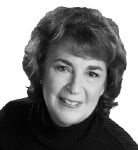Accelerating Approvals, Revisiting Reimbursement
Excitement over more new treatments for cancer and rare diseases is offset by cringing over prices.
FDA is approving more new drugs this year, supporting predictions that the 2016 drop-off in approvals was a “blip,” and that scientific advances and streamlined regulatory programs will continue to bring more new molecular entities (NMEs) to patients in the coming months. Yet the six-figure price tags on many innovative therapies raise concerns on all sides, spurring proposals to reduce exclusivity granted new drugs and biologics, to accelerate approval of more generic competitors, and to even cut drug dosing to reduce
Jill Wechsler

costs. Marketers are offering financial assistance to offset rising co-pays, but that draws strong opposition from insurers and pharmacy benefit managers (PBMs) and allegations of fraud from prosecutors.
More breakthroughs
FDA officials predicted that 2017 would be “a bounce-back year,” with new applications easily surpassing the 22 novel drugs and biologics brought to market in 2016. Agency reviewers are realizing that goal with the approval of more than 20 NMEs by mid-year, including important treatments for rheumatoid arthritis, ALS, Parkinson’s disease and multiple cancer conditions. Of note, the Vertex cystic fibrosis drug Kalydeco (ivacaftor) gained an additional indication based solely on in vitro data and without additional clinical trials. Another regulatory first was to authorize Merck & Co.’s cancer drug Keytruda (pembrolizumab) for the treatment of tumors associated with a specific genetic abnormality, as opposed to cancers affecting parts of the body, such as lung or breast.
No surprise that specialty therapies are prominent in the surge in applications and approvals, as biopharma companies shift resources to treatments for rare diseases and cancer that command high prices and benefit from streamlined development protocols and accelerated reviews by FDA. A fairly full R&D pipeline with many late-stage trials underway bodes well for a steady stream of breakthrough applications to the agency.
The annual meeting of the American Society of Clinical Oncology (ASCO) in June provided a visible platform for highlighting these trends. Investigators reported exciting results from studies for new checkpoint inhibitors and chimeric antigen receptor T (CAR-T) therapies, while sponsors announced plans to test numerous combinations of the new breakthroughs and older treatments in search of more effective multi-drug formulations.
Doubling costs
One problem, though, is that combination therapies can cost twice as much, or more, than monotherapy, raising questions about the value of more complex treatments. Roche met pushback at ASCO when it reported less-than-anticipated benefits from studies that combined its new drug Perjeta with established Herceptin at double the cost.
Public outrage over steady price increases for new cancer therapies and other specialty drugs continues to generate cost-cutting proposals from Congress and government agencies. FDA commissioner Scott Gottlieb recently called for extending review priority to the second and third generics entering a market, and not just the first one, to speed approvals of more low-cost generic therapies. He and others also want to prevent brands from restricting generic makers’ access to comparators needed for bioequivalency testing. There evidently are some 180 brand-name drugs that lack generic competition despite patent expiration, and FDA is looking to publish this information more widely.
Drug pricing concerns also have focused attention on the role of exclusivity incentives in blocking competitive therapies from the market. A broad drug cost-cutting bill sponsored by Sen. Al Franken (D-MN) and leading Democrats includes provisions to lower the five-year exclusivity for new chemical entities in certain situations, reduce the 12-year exclusivity period for new biological products to seven years, and modify the 180-day exclusivity for the first generic to encourage additional copy-cat drugs. Companies convicted of fraud would lose the remaining market exclusivity periods on certain products, and the winner of a $2 billion prize for developing important new antibiotics would have to waive all exclusivity and patent rights, in addition to offering a “reasonable” price and sharing clinical data.
The seven-year exclusivity provided to orphan drugs also is under review, as reformers seek to prevent pharma companies from “gaming” the system by gaining additional rare disease indications for established drugs. Leading senators want the Government Accountability Office (GAO) to investigate such

“evergreening” of orphan drug exclusivity through multiple orphan designations.
Another way to cut drug costs and reduce the “financial toxicity” that new cancer therapies can have on individuals may be to treat patients with smaller doses of costly new drugs. A group of cancer researchers presented data at ASCO indicating that reduced doses or shorter duration of treatment could prove effective

at reduced cost, here finding that Janssen’s Zytiga could be effective at lower doses when taken with food. The plan is to conduct more studies to see if such strategies apply to additional oncology therapies.
Many of these issues were discussed at a hearing last month before the Senate Health, Education, Labor and Pensions (HELP) Committee. Avalere Health president Dan Mendelson described the need and process for shifting to value-based payments. Allan Coukell, senior director at The Pew Charitable Trusts, explained how limited competition drives up prices and urged review of exclusivity periods for biologics and orphan drugs to “ensure the appropriate balance.” And Johns Hopkins professor Gerard Anderson backed policies to limit how brands block generic drug market entry and abuse orphan drug exclusivity policies. He also criticized Patient Assistance Programs (PAPs) for allowing drug companies to raise prices by keeping patients immune to cost-sharing (see sidebar; click to enlarge). Another panel hearing this month will examine the drug development and distribution process, and a fall session will discuss a coming National Academy of Sciences study on patient access to affordable drugs.
Jill Wechsler is Pharmaceutical Executive’s Washington Correspondent. She can be reached at jllwechsler7@gmail.com

FDA Grants Priority Review to Regeneron’s Eylea for Macular Edema Following Retinal Vein Occlusion
April 18th 2025Regulatory action was based on data from the Phase III QUASAR trial, which demonstrated that Eylea HD dosed every eight weeks achieved non-inferior visual acuity outcomes compared to Eylea in patients with macular edema following retinal vein occlusion.
Navigating Distrust: Pharma in the Age of Social Media
February 18th 2025Ian Baer, Founder and CEO of Sooth, discusses how the growing distrust in social media will impact industry marketing strategies and the relationships between pharmaceutical companies and the patients they aim to serve. He also explains dark social, how to combat misinformation, closing the trust gap, and more.